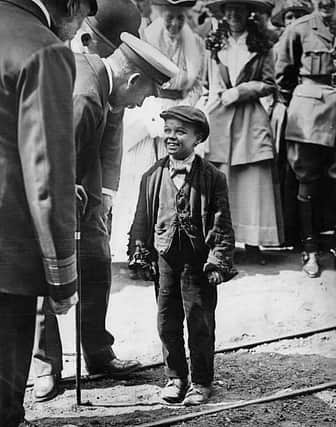ON THE WATERFRONT: The lad who shook the King’s hand


But it was an encounter at Sir James Laing and Sons’ Deptford shipyard -
immortalised in a Sunderland Echo photograph, when the King met a young lad
Advertisement
Hide AdAdvertisement
Hide Adnamed John Cassidy, which brought fame (but not fortune) to the 17-year-old
apprentice, who worked as a paint pot lad (rivet painter).
John was only three feet six inches tall at the time of the visit, when he was spotted by the King, perhaps attracted by the boy’s cheeky smile and diminutive appearance.
A colleague said: “Go on, the King’s shouting for you.” Rather embarrassed, John had to ask which was the King!
On being asked his age, “Seventeen, sir,” was the response, to which the King
Advertisement
Hide AdAdvertisement
Hide Adincredulously replied: “Seventeen! Have you not made a mistake in your age?” “No sir,” John replied.
Wearing a cloth cap, ragged clothing and well-worn shoes, grimy-faced John shook hands with His Majesty, resplendent in naval uniform - an experience which Cassidy recalled with pride for the rest of his life.
The King had commented on a ring John was wearing and asked how much it had cost. On being told “tuppence,” King George seemed not to understand with a bystander having to interpret the meaning as “two pence.”
That n ight, crowds of cheering locals gathered outside John’s home, all wanting to kiss or shake hands with him. But, out of respect for the King who had shaken his right hand, he would from that day forward only ever shake with his left.
Advertisement
Hide AdAdvertisement
Hide AdBorn in 1900 of Irish stock and living in semi-poverty at South Johnson Street, Sunderland, John was made redundant as an acetylene welder with Laings when h e was 21. After 10 years on the dole, he found work in Yorkshire before returning to Sunderland, where he worked for Steels Cranes at Pallion.
Unmarried and living alone at Plains Farm, ill health forced him to give up work in 1959. He died in 1977, aged 77.